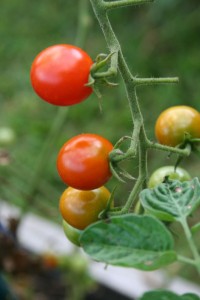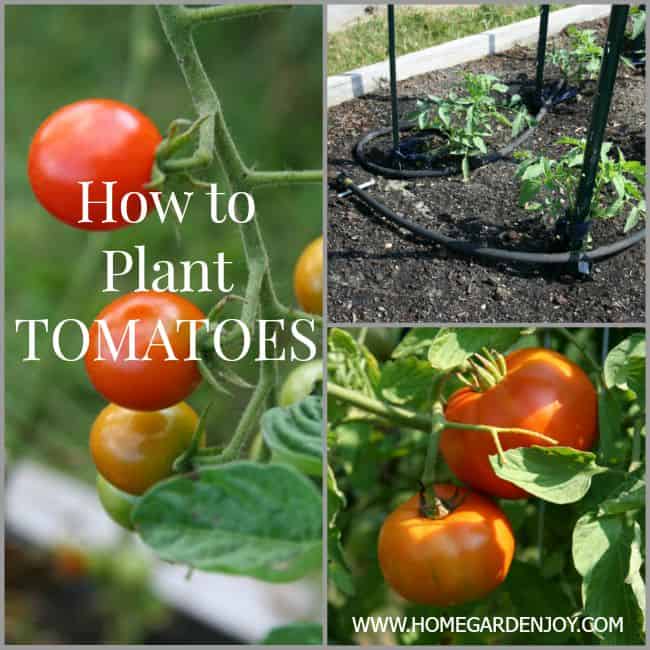
How to Plant Tomatoes
- Dig the planting hole so that when you set the plant’s roots into the hole, some of the stem is covered. I know that this is going to go against everything you’ve ever learned about planting vegetables and flowers, but hear me out. Tomatoes are unusual in that new roots develop off of the stem portion that’s underground. I like to pinch off the lower set of leaves and place those at ground level to encourage additional root formation.
- Remove the tomato plant from the pot or container by gently tapping the pot and using your hand to cup or catch the plant as you remove it. Set it into the planting hole, and replace the soil.
- Plant tomatoes at least 24 inches apart or more. Most of the Cooperative Extension websites recommend 24-36 inches or more apart. You need good air circulation around the plants to prevent diseases, and tomatoes can grow very tall and wide.
- Fertilize with a water-soluble fertilizer when you first plant tomatoes. Missouri’s Cooperative Extension site recommends 10-52-17 fertilizer, but to be honest, I’ve never seen one with those numbers. It’s clear they’re recommending a fertilizer with a high phosphorous (middle number), so if you can’t find a special tomato fertilizer, look for one with a higher middle number.
Cut worms seem to love tomato plants. Cut worms snip the tender stem right in half. To prevent cut worm damage, take a paper or Styrofoam cup and cut it in half. Place the ring with both ends open over the plant to make a little collar. This keeps the cut worm from crawling towards the stem. They hit the collar and give up. You can also fold newspaper sheets into a thick collar about an inch tall and use masking tape to close the collar off. Place it around the stem, leaving a few inches between the paper collar and the stem.










I wonder – we are probably going to be here when tomatoes ripen. Maybe we could grow some on our balcony this year.